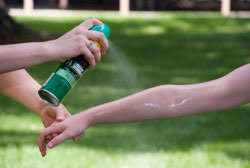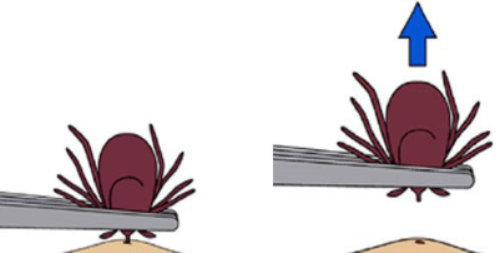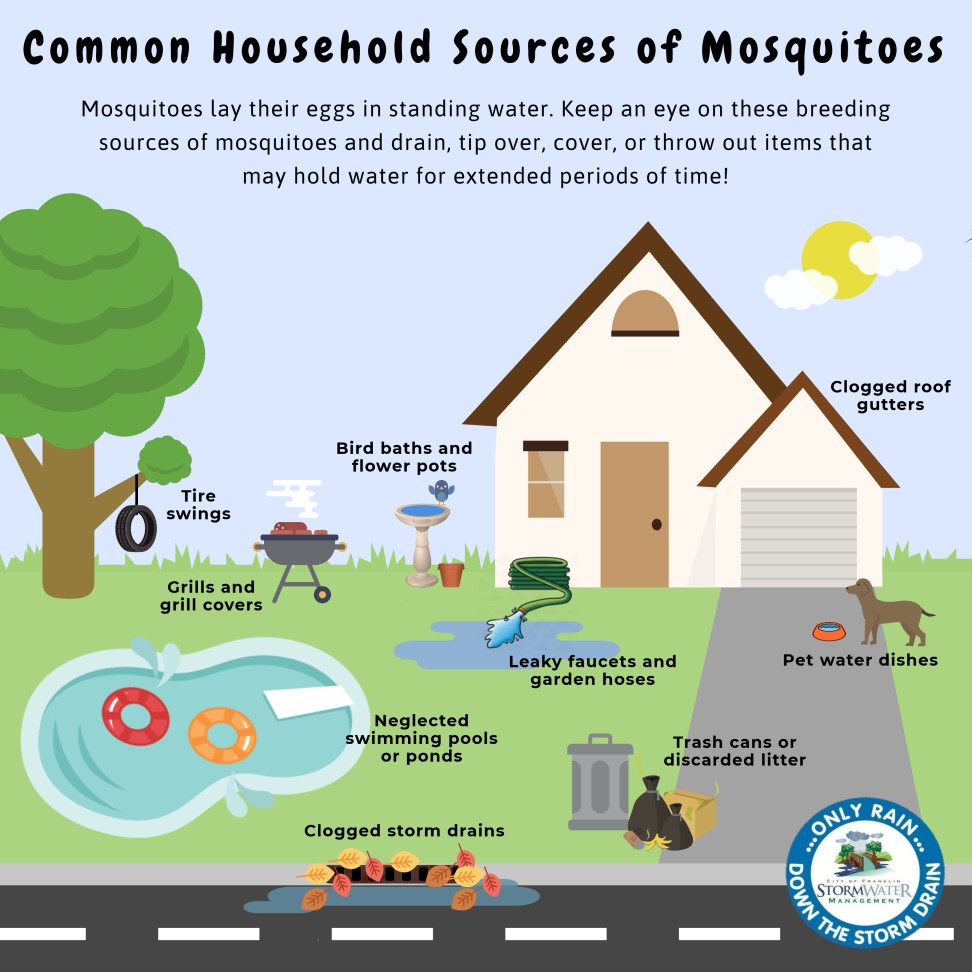Fight the Bite!
Locally-acquired Malaria Case in National Capital Region
Malaria Information

Don’t let bugs take the fun out of being outside! Follow these tips to fight the bite of mosquitoes and ticks that can spread diseases like Lyme and West Nile.
Before going outside
- Wear long sleeve shirts and pants; tuck shirt into your pants and pants into your socks if hiking in fields or woods. Light colors are best.
- If using sunscreen, apply sunscreen first, then repellent. Products that combine sunscreen and bug spray don’t work as well.
- Use an EPA-registered insect repellent with approved active ingredients:
- DEET (20-30%)
- Picardin, also known as KBR 3023, Bayrepel, and icaridin
- IR3535
- Oil of Lemon Eucalyptus (OLE) or para-menthane-diol (PMD)*
When used as directed, these repellents are safe for pregnant and breast-feeding women and children. Do not use repellent on babies younger than 2 months old. *Do not use OLE or PMD on children under 3.
Use this tool to find the repellent that’s right for you.

- If you spend a lot of time outside, consider treating clothes and gear with permethrin or buying treated gear.
When you are inside
- Use screens on doors and windows or use air-conditioning.
- Check all over for ticks when you come inside, especially under arms, in and around ears and hair, behind knees, between legs, and around waist and belly button. Check pets, too.
- Shower within two hours to wash off unattached ticks. Put clothes in the dryer on high heat to kill ticks, or wash and then dry clothes.
- If you find a tick, remove it with fine-tipped tweezers.
- Never crush a live tick with your fingers. You can flush it down the toilet. If you want to save it for identification, put it in alcohol or a sealed bag or container.
- If you or your child develop any symptoms after a bite or exposure to mosquitoes or ticks, call your healthcare provider. Pictures of the bite or rash may help with the diagnosis. Signs and symptoms to watch for include:
- Fever
- Rash
- Body and muscle aches
- Joint pain
- Fatigue
- Headache
- Stiff neck
- Paralysis
For more information on ticks, visit our Tick page.
In Your Yard
Create Tick-Safe Zones:
- Clear tall grass and brush around your house and at edge of your lawn. Remove leaf litter.
- Place a 3-foot wide barrier of wood chips or gravel between lawns and wooded areas and around patios and play equipment.
- Keep playground equipment, decks, and patios away from yard edges & in sunny locations.
- Use acaricides (tick pesticides).
- Discourage deer activity.
For more information, visit the CDC’s page Preventing Ticks in the Yard.
Dump and Drain to Reduce Mosquitoes:
- Twice a week, empty any items that can hold water, such as flower pots, pet dishes, trash cans and lids, bird baths, and wading pools.
- Clean your yard of small items that can collect water, like toys and plastic bags. Mosquitoes can lay eggs in tiny amounts of water such as a bottle cap!
- Cover water storage containers, like rain barrels or cisterns, and repair cracks.
- If you have a septic tank, repair cracks or gaps. Cleanout pipes must be capped.
- Clean gutters so water can drain.
- Drain boats twice a week; store small boats upside down.
- Make sure tarps don’t hold water.
For more information, visit the CDC’s page Controlling Mosquitoes at Home.
To watch a series of short videos that show you how to prevent mosquitoes from breeding in your yard, visit the Maryland Department of Agriculture’s YouTube page.



